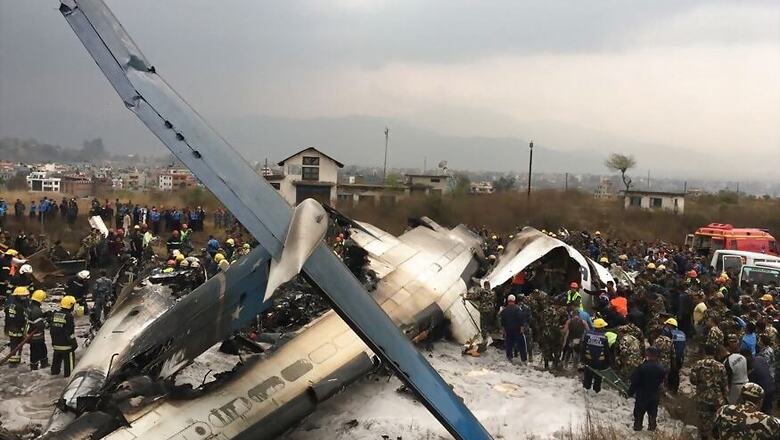
views
The US-Bangla airline Bombardier UBG-211 crash that occurred in March last year happened because the pilot smoked tobacco inside the cockpit despite restrictions, authorities have confirmed.
According to a report by the news agency ANI, the panel set up to probe the accident, after scuffing through the CVR (cockpit voice recorder) record, reached the conclusion that the pilot in command (PIC) smoked in the cockpit during the flight.
However, because the department and authorities concerned were unsure whether the safety violation led to the fatal accident, an Accident Investigation Commission was formed to ascertain the reasons behind the crash.
Now the Accident Investigation Commission has determined that the accident was caused due to disorientation and a complete loss of situational awareness in the part of the crew member, said the report.
As many as 51 were reported dead when the aircraft crashed immediately after landing on Nepal's Tribhuwan International Airport (TIA). All four crew members of the airline, including two cockpit crew and two cabin crew, along with 45 passengers out of the total 67 aboard were killed during the accident
The reports were published later after the investigation commission submitted it to the Nepali Ministry of Culture, Tourism and Civil Aviation.
“Contributing to this the aircraft was offset to the proper approach path that led to manoeuvres in a very dangerous and unsafe attitude to align with the runway. The landing was completed in sheer desperation after sighting the runway, at very close proximity and very low altitude. There was no attempt made to carry out a go-around when a go-around seemed possible until the last instant before touchdown on the runway," the statement read.
The post-mortem of the deceased, performed in the Department of Forensic Medicine in Kathmandu, revealed that the death of the passengers was a result of head injuries caused by the blunt force of the crash.
The report has further blamed the control tower of the TIA and the crew for the incident.The Cockpit Voice Recorder data revealed some confusion in communication within the terminal area between the crew and the air traffic controller (VNKT Tower) regarding intentions of the flight crew and clearances for runways 02 and 20.
On March 12 last year, the US Bangla Airlines while operating a scheduled passenger flight crashed about 442 meters southeast of the touchdown point of runway 20.













Comments
0 comment